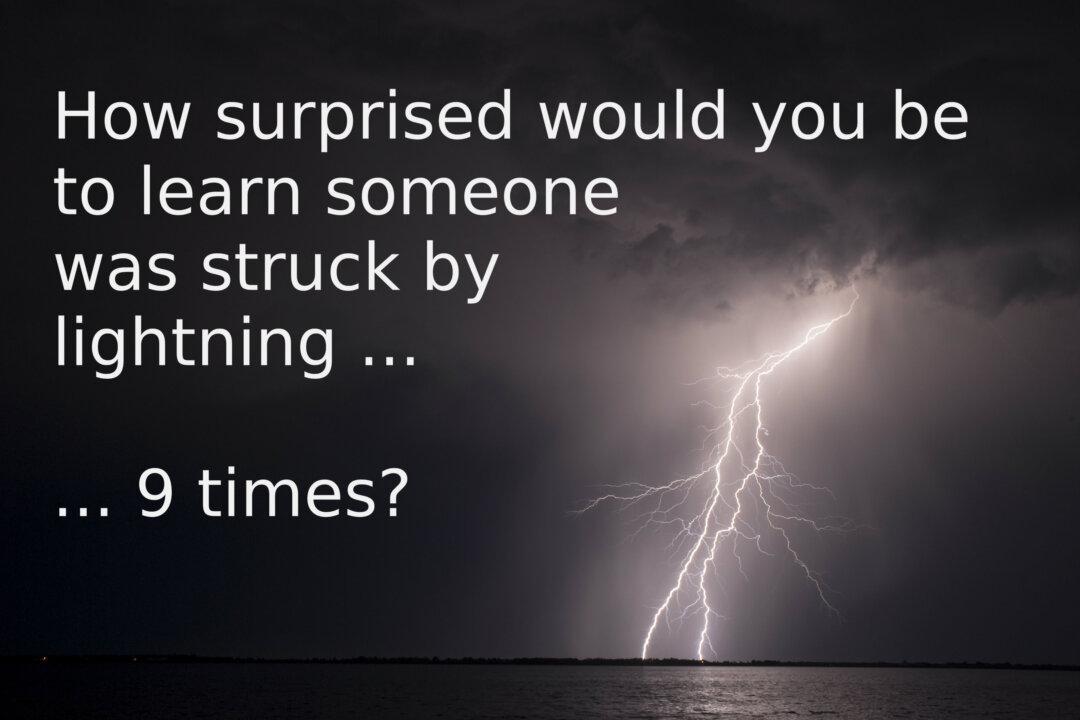When people experience coincidences, they often think, “Wow, the chances of this occurring are so small!” Some statisticians say, however, that people aren’t good at intuitively calculating the chances. What may seem improbable, could actually be very probable.
We tend to neglect the base rate. We become focused on the unlikeliness of the current event and do not appreciate the frequency of events like it.
The base rate tells us how likely a certain kind of event is—how likely it is for someone to be struck by lightning, for example.
In the United States, according to the National Weather Service, the likelihood of being struck by lightning is about 1 in 1.1 million. That’s because about 330 people are struck each year, and the population of the United States is about 300 million.




